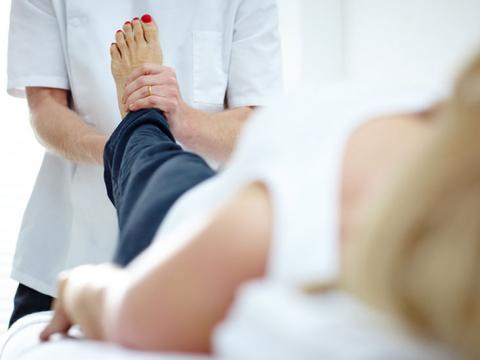
"November is National Diabetes Month. As I mentioned in my last post, there are 4 things that need to be done at least yearly by every patient with diabetes. Today we are going to talk about the importance of a foot exam. Because even well controlled sugars stay above the normal range, damage can happen to your nerves. Just like the small blood vessels in the eyes, the small nerves in the hands and feet are damaged first. This can lead to numbness, burning and tingling (called neuropathy) in the hands and feet. It can also lead to a loss of sensation. Pressure is usually the last thing to be affected, and that is why you can feel your feet when you put on your shoes. On the other hand, light touch, vibration sense and temperature can be affected and can be difficult to notice, especially in the beginning. Every year, you need to remove both of your shoes (and socks), so your provider can examine your feet. This involves taking a close look at areas that are difficult for some patients to see. We are looking for sores, calluses, changes in your nails, deformities (like bunions) and changes in the skin (dryness, rashes, etc.). The other thing we will do is test your sensation with a tool called a monofilament. If there are areas where you cannot feel the monofilament when it is pressed on the skin of your toes/feet, you are at increased risk of getting a cut, or a sore in an area that is not immediately noticeable. That, in turn, can lead to a worsening infection – what is often called a “diabetic foot ulcer”. If left untreated, a diabetic ulcer can progress to gangrene, or osteomyelitis (bone infection); and that can lead to an amputation. Approximately 200,000 lower extremity amputations happened in the United States last year from diabetes related infections. However, the earlier the infection was found and treated, the less likely an amputation was to occur. In addition, good preventative care can make all the difference. Wear comfortable, well fitted shoes, do not go barefoot – especially outside, keep your feet cool and dry (even if that means changing socks during the day), take a close look at your feet each night, and have your feet examined by your healthcare provider at least once a year. In my next post I will discuss how a urine test can reveal your kidney health in a way that a blood test cannot."
- Log in to post comments

